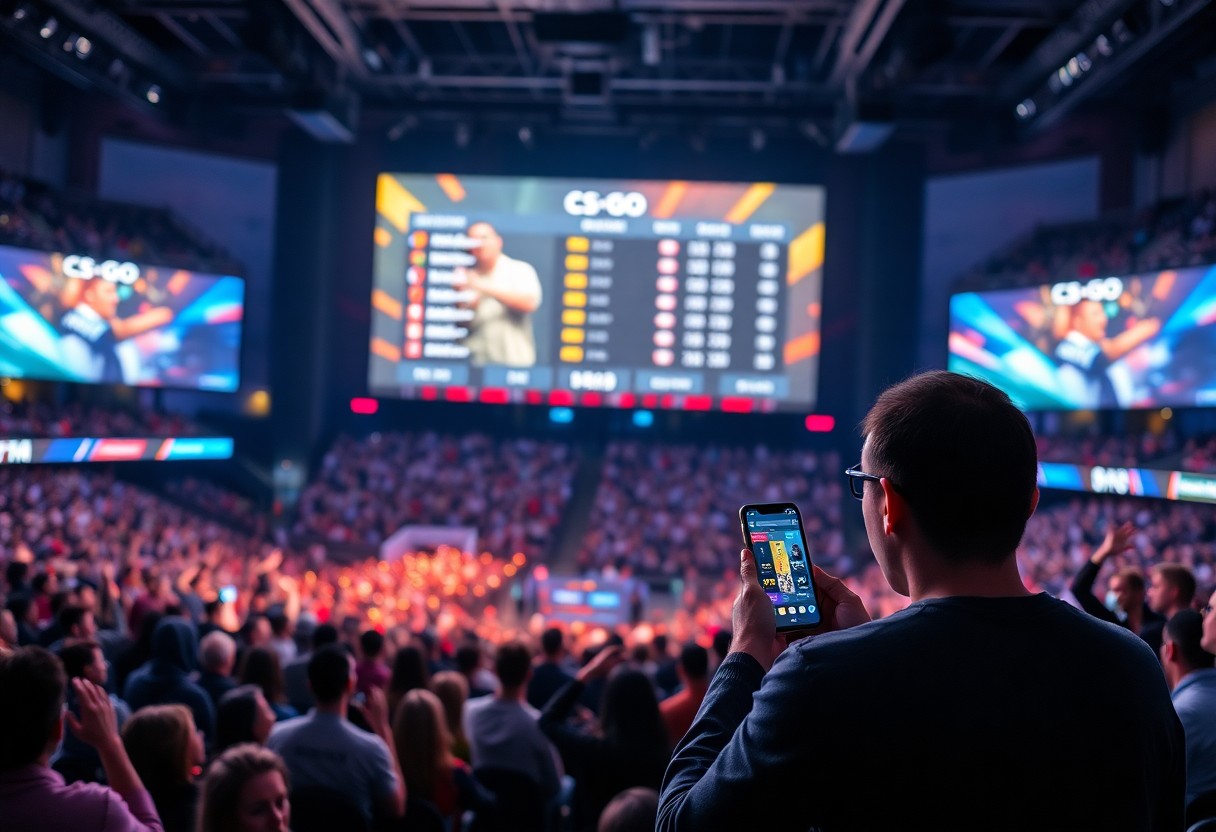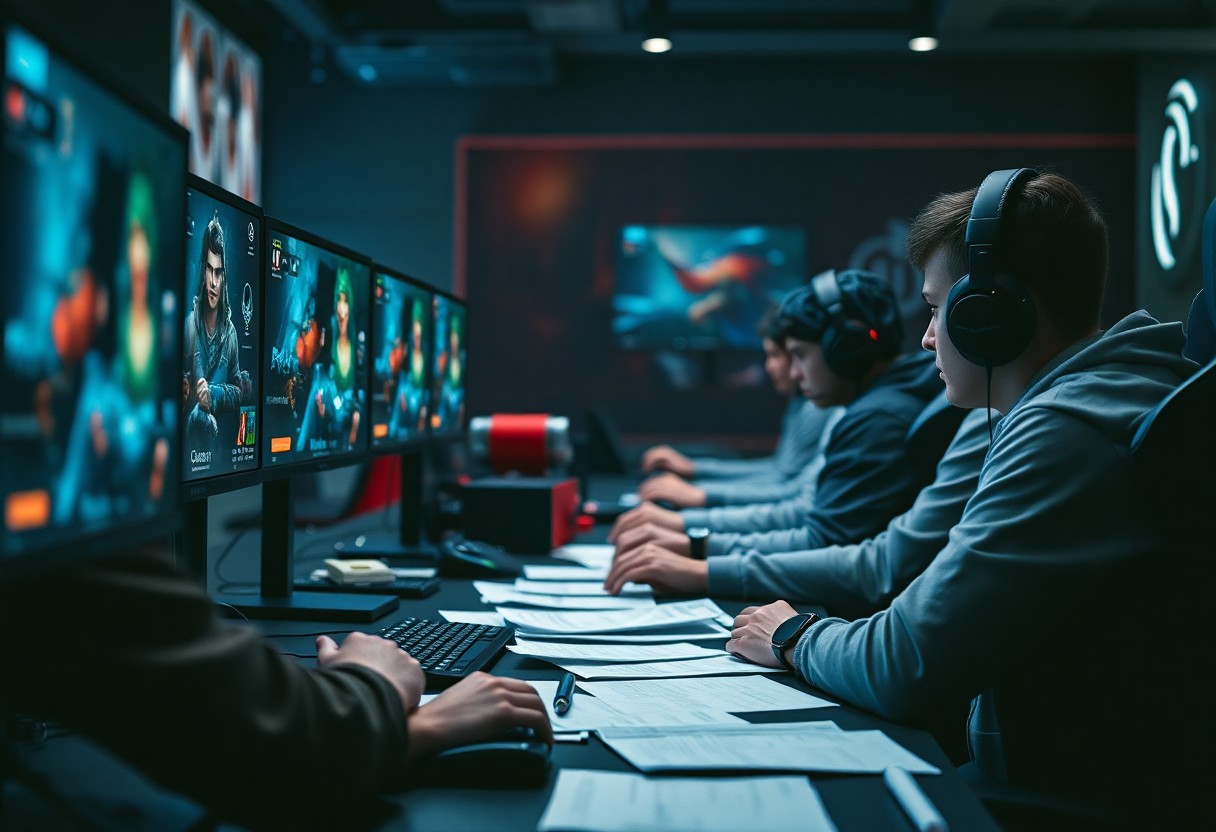Over time, game patches have become integral to the evolving landscape of esports, shaping not only gameplay mechanics but also the competitive strategies employed by teams and players. These updates can introduce new characters, balance gameplay elements, or fix bugs, all of which contribute to a shift in the metagame—the prevailing strategies and tactics within a specific game. Understanding how these patches influence player choices and team compositions is imperative for anyone looking to grasp the dynamics of high-level competitive gaming.
Understanding Game Patches
Before delving into the intricacies of how game patches influence esports metas, it is important to comprehend the basics of what these patches entail. Game patches are updates released by developers that typically address bugs, balance game mechanics, introduce new content, or modify existing features. These patches can significantly alter gameplay dynamics and impact the strategies employed by players and teams in competitive settings.
What Are Game Patches?
Across the gaming landscape, patches serve as vital tools for developers to refine the user experience and maintain the integrity of the game. They can range from minor fixes that address specific issues to extensive updates that overhaul gameplay mechanics or introduce new heroes, champions, or maps. Such updates are often informed by community feedback, developer vision, and ongoing trends within the competitive environment.
The Role of Developers
Against this backdrop, developers play a pivotal role in shaping the esports landscape through their patch decisions. Their ability to introduce new features or modify existing ones can steer the meta, evolving how teams approach strategy and gameplay. When developers release a patch, they consider factors such as player feedback, competitive balance, and recent tournament results, which ultimately affect how the game is played at the highest levels.
With their expertise and knowledge of the game’s mechanics, developers often analyze game data to identify imbalances or emerging trends, proactively addressing issues before they escalate into significant problems within the competitive scene. By doing so, they ensure that no single strategy, character, or item becomes overwhelmingly dominant, thus fostering a dynamic and shifting meta that keeps competitive play engaging and unpredictable.
Impact on Competitive Balance
If game patches can significantly reshape how competitive balance is established in esports, addressing the strengths and weaknesses of various characters and strategies is key. Developers regularly release updates to ensure no single character or strategy becomes overly dominant. This is particularly important in games where character selection can greatly influence match outcomes, as it ensures a level playing field that fosters compelling contests. When one character is buffed or another is nerfed, it can shift the meta entirely, possibly allowing previously disregarded characters to rise to prominence while sidelining others that once thrived. Thus, the implications of these patches extend beyond mere numerical adjustments, as they can alter player strategies and team compositions at a fundamental level.
Changing Character Strengths
Between patches, the dynamics of character effectiveness can drastically change, often leading to a shifting landscape of competitive play. When a character receives a buff, enhancing their abilities or stats, they may become more attractive to players seeking an advantage in tournaments. Conversely, characters that receive nerfs might see a decrease in usage and effectiveness, prompting teams to adjust their strategies accordingly. These shifts not only affect individual player performances but can also stimulate broader trends within the competitive scene, as teams explore new synergies and countermatches that emerge from the evolving character landscape.
Adjusting Game Mechanics
Before implementing a patch, developers often gather extensive data and player feedback to identify problematic game mechanics that may disrupt balance. Adjustments to game mechanics, such as changes to movement speed, damage calculations, or resource management systems, can level the playing field by minimizing advantages based on prior exploits or strategies. These adjustments can lead to more engaging gameplay, where teams are incentivized to explore diverse strategies rather than relying on overpowered mechanics. By refining these core aspects of the game, developers not only maintain a healthy competitive environment but also enhance the overall player experience.
Game mechanics shape not just how characters behave but also how players approach each match. A patch may introduce new gameplay elements or modify existing ones, shifting the priority of certain tactics and strategies. For example, if a game introduces a cooldown on a powerful ability or alters the way players can interact with the environment, it fundamentally changes how matches are played. Teams must adapt their tactics swiftly, often leading to innovations in play styles and strategic planning. Such changes keep the competitive scene vibrant and ensure that players constantly recalibrate their approaches to stay ahead of their opponents.
Shifts in Player Strategy
Even the smallest game patches can lead to significant overhauls in how players approach strategy within esports. Changes in weapon stats, character abilities, or gameplay mechanics prompt players to rethink their tactics, often leading to a revaluation of favored team compositions or individual roles. As these adjustments ripple through the competitive scene, players must remain agile in order to effectively respond to the evolving landscape, adopting new strategies that align with the current state of the game. This agility becomes imperative in maintaining a competitive edge, as teams that fail to adapt may find themselves left behind in the fast-paced world of professional esports.
Adapting to New Meta
Between patches, teams monitor the community’s response and analyze how changes impact character viability and overall strategy. This phase of adaptation often leads to a reevaluation of existing strategies, as players experiment with newly buffed characters or spells that have shifted the balance in gameplay. Successful teams generally invest time in scrimmages to test these new strategies, leading to innovative tactics that can surprise opponents who have maintained a more traditional approach. The ability to pivot and incorporate the strengths of the altered meta can create significant advantages in matchups, often deciding the outcome of tightly contested games.
Emergence of Counterplays
One of the more fascinating aspects of shifting metas is the emergence of counterplays that evolve in response to new dominant strategies. As certain heroes or tactics are favored due to their enhanced effectiveness, the competitive community begins to develop counter-strategies aimed at dismantling these power plays. This dynamic creates a cycle where players not only adopt new strategies but also anticipate and counter opponents’ adaptations. The cat-and-mouse nature of these counterplays highlights the strategic depth in esports, as players continually assess and respond to shifting power dynamics, often showcasing ingenuity in how they adapt their gameplay.
Shifts within the competitive landscape not only motivate players to adopt new strategies but also serve as a breeding ground for creative countermeasures. These adaptations often highlight the significance of foresight and planning, as players must remain vigilant about how their opponents might react to emerging trends. A well-timed response to an opponent’s newfound strength can transition a potential weakness into a glaring opportunity, reflecting the competitive depth inherent in esports and the continuous evolution driven by game patches.
Historical Examples of Patches
After significant milestones in the world of esports, patches have left an indelible mark on how games are played competitively. These modifications often introduce new content, alter existing mechanics, or fix perceived imbalances that can shift a game’s meta dramatically. The response to these patches, whether positive or negative, can dictate team compositions, strategies, and even the popularity of certain characters or classes within a game. Understanding how patches have shaped competitive landscapes provides valuable insight into the evolving nature of esports. Players and teams continually adapt to these changes to maintain their competitive edge, showcasing the dynamic environment of modern gaming.
Notable Patches in Esports History
On numerous occasions, specific patches have profoundly influenced esports scenes, leading to widespread alterations in gameplay. For instance, the 2016 patch for *League of Legends*, known as the “Preseason 6 Update,” drastically changed the jungle mechanics, introducing new items and making objective control more critical. This led to a meta heavily centered around jungle champions and strategy. Similarly, in *Dota 2*, the introduction of the 7.00 patch brought a new map and thousands of potential gameplay changes which not only affected hero viability but also prompted organizations to revamp their roster strategies to adapt to the new landscape.
Case Studies of Meta Shifts
On closer examination, specific case studies reveal how particular patches have resulted in significant meta shifts across different esports titles. Historical data showcases the precise impacts these patches have had, leading to alterations in team compositions and strategies. Beyond anecdotal evidence, statistical analysis reflects these transformations in terms of champion or hero pick rates, win rates, and overall game performance. Here are notable examples drawn from competitive play:
- *League of Legends* Patch 8.11 (2018): A balance update that increased the viability of Marksman champions, leading to a 25% rise in their pick rates at the World Championship.
- *Dota 2* Patch 7.00 (2016): Introduced a new map and mechanic, resulting in a player adaptation rate that saw previously unpopular heroes being picked over 15% more frequently during the major tournaments following its release.
- *Counter-Strike: Global Offensive* Patch 1.37 (2018): Adjusted the economy and weapon balancing, leading to a 30% increase in force-buy strategies among professional teams.
- *Overwatch* Patch 1.42 (2019): The addition of hero Brigitte led to a meta shift where the character’s emergence raised defenses and support compositions by 40% in competitive play, altering team strategies significantly.
A deeper examine meta shifts shows how compelling patches can lead to meta volatility in esports. Patches serve as catalysts for changes in competitive strategies and can often align or misalign with the prevailing strengths and weaknesses of various characters or heroes. This focus on adaptability highlights the players’ skill set in leveraging even minor changes to their advantage in high-stakes tournaments. Analysis of past patches allows teams to prepare and react more effectively in future competitions, creating a compelling narrative on the ever-evolving landscape of esports.
Community Reaction to Patches
Not all game patches are welcomed with open arms within the esports community. As developers release updates to balance the game, players often express mixed feelings about the changes, particularly when their favorite strategies or champions are affected. The reaction tends to be polarized: some appreciate the fresh dynamics introduced by patches, while others lament the loss of established metas that they feel comfortable with. The impact of this community feedback can significantly influence the direction of future patches, as developers seek to maintain player satisfaction and engagement.
Player Feedback and Adaptation
Between patch releases, players continuously scrutinize changes and provide feedback, forming a clamor that resonates throughout the gaming community. The adaptation process to a new meta is rarely straightforward; some players thrive while others falter as they struggle to come to terms with how their preferred playstyle has transformed. Top-tier players often lead the way, adapting their strategies using skills honed through countless competitions, which then trickles down to lower-ranked players trying to keep pace with the evolving game landscape.
Social Media and Discussions
Against the backdrop of these changes, social media platforms become a battleground for debates among players regarding the efficacy of patch updates. Fans and professional players voice their opinions on platforms like Twitter and Reddit, analyzing individual changes, voicing concerns about balance, and discussing potential strategies. These conversations help create a sense of community and shared experience, while also shaping the way patches are perceived. Some players create tutorials or guides to aid others in adapting to the shifts, exemplifying the collaborative spirit that thrives in the esports ecosystem.
Understanding how social media amplifies discussions around game patches sheds light on the broader community dynamics. Players not only share their thoughts on specific updates but also engage in dialogues about the overall direction the game is taking. Trends from these conversations can even influence the developers’ future decisions, as they monitor community sentiment to gauge the impact of their changes. This interaction helps foster a culture of responsiveness and continuous improvement in game design, ensuring that the esports community feels their voices matter in shaping the meta.
Future Trends in Game Patching
Once again, the landscape of game patching is evolving rapidly, influencing how the meta in esports is shaped. Developers are increasingly adopting agile methodologies, enabling them to respond quickly to player feedback and balance issues. This shift leads to more frequent and smaller updates rather than large, game-altering patches. As a result, the esports community must adapt swiftly to changes, as teams and players strive to optimize their strategies in real time.
Evolution of Patching Techniques
After years of incremental improvements, patching techniques have become sophisticated, with tools designed for real-time data analytics now being employed by developers. This evolution allows for a more granular approach to balance changes, ensuring that specific aspects of a game can be targeted without affecting the entire ecosystem. As developers integrate machine learning and predictive modeling into their patching strategies, the ability to forecast player behavior and meta shifts becomes more refined, ultimately enriching the competitive landscape.
Predictions for Upcoming Titles
Game developers are increasingly aware of the importance of meta stability from the initial launch of a title. Insights gained from previous esports titles suggest that upcoming games will benefit from built-in mechanisms for community engagement in the patching process. By incorporating player feedback directly into balancing systems, developers can create a more dynamic and responsive environment that better reflects the needs of competitive players.
In addition, the trend towards live-service models suggests that future esports titles will feature ongoing patches that could change the game significantly over time. This model may involve seasonal updates that not only balance the game but also introduce new content and gameplay innovations that enhance competitive play. As the esports community continues to thrive, the focus on sustainable, responsive patching strategies will be vital for both player satisfaction and the overall health of the competitive scene.
Conclusion
To wrap up, game patches serve as both a catalyst and a barrier for the evolving landscape of esports metas. Regular updates, which may include balance changes, bug fixes, or new content, are designed to keep gameplay fresh and engaging. However, these adjustments can shift the competitive dynamics, prompting players to adapt their strategies and, in some cases, rethink their approach entirely. The immediate response to patches can be seen in players experimenting with new characters, gameplay styles, and strategies. Consequently, a new meta begins to form, often characterized by dominant strategies and favored characters that best utilize the recent changes.
Moreover, the influence of these patches extends beyond individual gameplay and has broader implications for team composition and overall tournament strategies. Teams must engage in continuous analysis of patch notes and adapt their training regimens accordingly. This adaptability not only increases the level of competition but also enriches the viewer’s experience, as they witness the fluid and dynamic nature of esports. As the competitive scene continues to embrace these evolving patches, the ever-changing metas will remain a fundamental aspect of high-level play, defining the strategies and outcomes of numerous tournaments.







